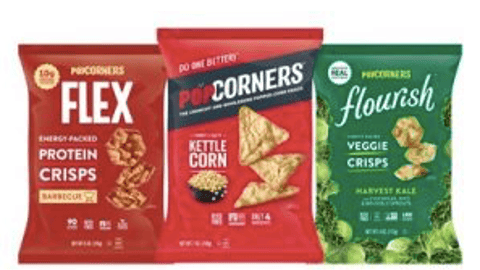CSNC EXCLUSIVE: The Ozempic effect
Diets come and go, make a little ripple, then disappear. Remember the celery juice diet craze? Paleo? Eating according to blood type? Done and dusted.
A new class of weight-loss drugs, known as glucagon-like peptide 1 (GLP-1) agonists that significantly reduce appetites are the real deal and no fad. Game-changing medications, like Ozempic and Wegovy (approved in Canada last May), will spark changes to everything from consumer buying behaviour to new product development, to what crops farmers grow.
Current estimates say about 10% of the Canadian population are now taking GLP-1 medications. That number is poised to rise significantly, thanks to a growing body of research showing additional health benefits of the drugs, like a reduced risk of heart disease and stroke, and pharmaceutical companies, like Eli-Lilly and Novo Nordisk, now in clinic trials with GLP-1 pills that could replace injections. With almost 35% of the Canadian population over age 18 being categorized as overweight and another 30% as obese, the potential for this type of weight-loss drug is enormous.
For businesses selling or making consumer food products, the impact is already evident. Industry experts say that c-stores need to pay heed and be prepared to evolve what they stock. For those c-stores that are proactive, the GLP-1 consumer represents new opportunities to increase profits and consumer basket size.
Doing nothing comes with risks for c-stores, says Jo-Ann McArthur, founding partner and president of Nourish Food Marketing. She flagged “the Ozempic effect” in her 2024 trend forecast newsletter more than a year ago. Some people laughed at the notion of that a new category of weight-loss drugs could mean disruption in the food industry, but reality set in.
In October 2023, Walmart said it is seeing a drop in food sales due to the number of customers taking appetite-suppressing drugs. And the CEO of Kellanova (maker of Pringles and Cheez-Its) revealed the company was studying the impact of new dietary behaviours of GLP-1 users and was ready to mitigate it, if necessary.
Meanwhile, a study looking at the impact of appetite-suppressing drugs on consumer eating habits from Dalhousie University’s Agri-Food Analytics Lab showed almost half of GLP-1 users reported eating less and 30% reduced their consumption of sweet bakery goods, soft drinks, candy, cookies and chocolate, while 25% ate less salty snacks. For c-stores, the categories mentioned above are major sources of revenue.
“If any retail channel is most at risk, it’s going to be convenience stores,” notes McArthur. “Trips to c-stores tend to be more indulgent.”
The risk can also represent opportunities, she says, by anticipating the trends and offering healthier portions, curated sections of the store featuring foods that support weight loss, not just for GLP-1 users but anyone who is trying to eat better, maintain their weight or shed a few pounds. These are changes that c-stores should be thinking about doing now, she advises.
With the focus shifting from empty calories to nutrient-dense foods, retailers need to consider as more consumers try to meet their daily nutritional needs.
Andreas Duess, managing partner of 6 Seeds, a data-enabled marketing consultancy and creative ventures business, has been monitoring the potential impact of GLP-1 drugs on consumer buying behaviour and food product development for the last year and a half. Investors were early to show their concern about a fall in demand for certain products. For example, Duess points to the purchase of snack giant Hostess Brands by J.M. Smucker and the negative impact it has on the company’s stock price.
Seize the day: How to boost profits as more consumers focus on weight loss and health
While the Ozempic effect is not quite at the tipping point, Andreas Duess predicts it won’t take long for the markets to reach it. What can c-stores do to be proactive now? Consider these pointers to appeal to weight-loss medication users:
- Think small. For grab and go fare, consider scaled-down portions priced appropriately, from half sandwiches to miniature baked goods that can tout health benefits, like added fibre. Have single-serve, protein bars at check-outs, alongside other confectionary items.
- Nutrition proposition. Focus on expanding your selection of healthy foods – ones that are low glycemic, low carb, low calorie and less processed, but still offer convenience. Think fresh fruit, yogurt, salad with low-cal dressing. Be transparent with nutritional information so customers can make informed decisions.
- Better visibility. Put GLP-1 friendly foods where they can be seen. Group them together and add signage, like “supports healthy weight loss” or “good sources of protein.”
- Test, test, test. Keep an eye on how consumers respond to new healthy products. Sales will be the best indicator of what customers want.
Recently, Duess hosted Ozempic & The Food Industry, a webinar that presented the latest data on how retailers and consumer packaged food companies may be affected by the changing demands of GLP-1 consumers. His research shows that Ozempic users’ top three experience needs for food were “convenient,” “easy” and “quick.”
That may bode well for convenience stores if they stock items that meet that criteria and satisfy the demand for better nutrition.
It’s also important to note that GLP-1 users are primarily women—about 65%. That aligns well with the c-stores consumers. About 48% of women shop at convenience stores regularly, according to data from Capital One.
Consuming protein is important to those on weight-loss regimes. It has a thermogenic effect as it required more calories for the body to break down and it helps reduce loss of muscle mass while losing weight, while being satiating. Abbott Laboratories has launched Protality, a new brand of protein shake specifically designed for adults trying to maintain muscle mass while reducing caloric intake.
Also, along those lines, Annie’s Macaroni & Cheese has introduced Super Mac with 15 g of protein compared to 9 g in the regular version and Hershey’s is now offering protein powder in conjunction with supplement brand C4, inspired by Reese’s and Hershey’s chocolate.
Two Canadian snack innovations capitalizing on the protein demand include Protein Candy with 14 g of protein, 6g of fibre, 4g of sugar and 140 calories per bag and Todd’s Egg-Cellent Protein Puffs with 12 g of protein and 135 calories per bag.
Meanwhile, Nestlé has created Vital Pursuit, a new line of frozen meals new Vital Pursuit line of nutrient-rich frozen meals made with whole grains, designed specifically to appeal to GLP-1 consumers. It’s a sign that big companies getting ahead of the disruption rumbling through food retailing.
As Duess says, “The Ozempic effect represents a massive opportunity for convenience stores. They can meet consumers’ changing needs and fill a gap in the market.”









